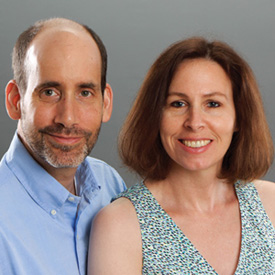Burt Kaliski Jr. ’84, SM ’87, PhD ’88
Burt Kaliski Jr. is one of the people to thank for safeguarding sensitive information during your next online transaction. As chief scientist at RSA Laboratories, Kaliski led the development of the Public-Key Cryptography Standards (PKCS), among the earliest tools for better Internet security that are widely used by technology companies today.

Computers, math, and codes have long fascinated Kaliski, who earned his degrees in electrical engineering and computer science with a research focus on cryptography. His MIT education is still paying off. “The skill of research and how to break down a problem—that’s been valuable throughout my career,” he says.
His MIT connections have been equally beneficial. His advisor, Professor Ronald Rivest, cofounded RSA, which Kaliski joined soon after graduation. When the company was acquired by EMC in 2006, Kaliski served as the founding director of the EMC Innovation Network, which encourages university collaborations. In 2011 he moved to an RSA spinoff, Verisign, to oversee its long-term technology vision as senior VP and CTO of Verisign Labs. His new job keeps him engaged with cutting-edge academic researchers as he develops intellectual-property strategy.
MIT continues to play an important role for Kaliski and his wife, Michele Kaliski, SM ’87, who earned a degree in mechanical engineering, focusing on manufacturing management. One mutual interest is supporting the Public Service Center (PSC), which promotes leadership and service opportunities that match MIT’s innovative culture. “We really wanted to invest in people who are going to have an impact beyond themselves,” Michele says. “It’s not a one-time investment. It multiplies.”
The Kaliskis were among the first sponsors of the Global Challenge, an annual public-service innovation competition that invites participation from the worldwide MIT community. “It’s amazing to see how much could be done with the right investment of technology,” Burt says, citing a student invention that aids drug delivery and another one that purifies water. “That’s such a practical way to put your knowledge to work.”
These days, the Kaliskis are settling in to their new home in McLean, Virginia, after 15 years in the Boston area, and they are adjusting to an empty nest. Though neither their son nor their daughter attends MIT, both served as unpaid interns for the PSC. “We see it as a way to get them introduced to the concept of public service,” Burt says. “There’s a benefit in working with MIT and its community and focusing on something that’s transformative.”
Keep Reading
Most Popular
Large language models can do jaw-dropping things. But nobody knows exactly why.
And that's a problem. Figuring it out is one of the biggest scientific puzzles of our time and a crucial step towards controlling more powerful future models.
How scientists traced a mysterious covid case back to six toilets
When wastewater surveillance turns into a hunt for a single infected individual, the ethics get tricky.
The problem with plug-in hybrids? Their drivers.
Plug-in hybrids are often sold as a transition to EVs, but new data from Europe shows we’re still underestimating the emissions they produce.
Stay connected
Get the latest updates from
MIT Technology Review
Discover special offers, top stories, upcoming events, and more.